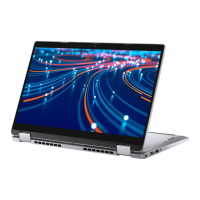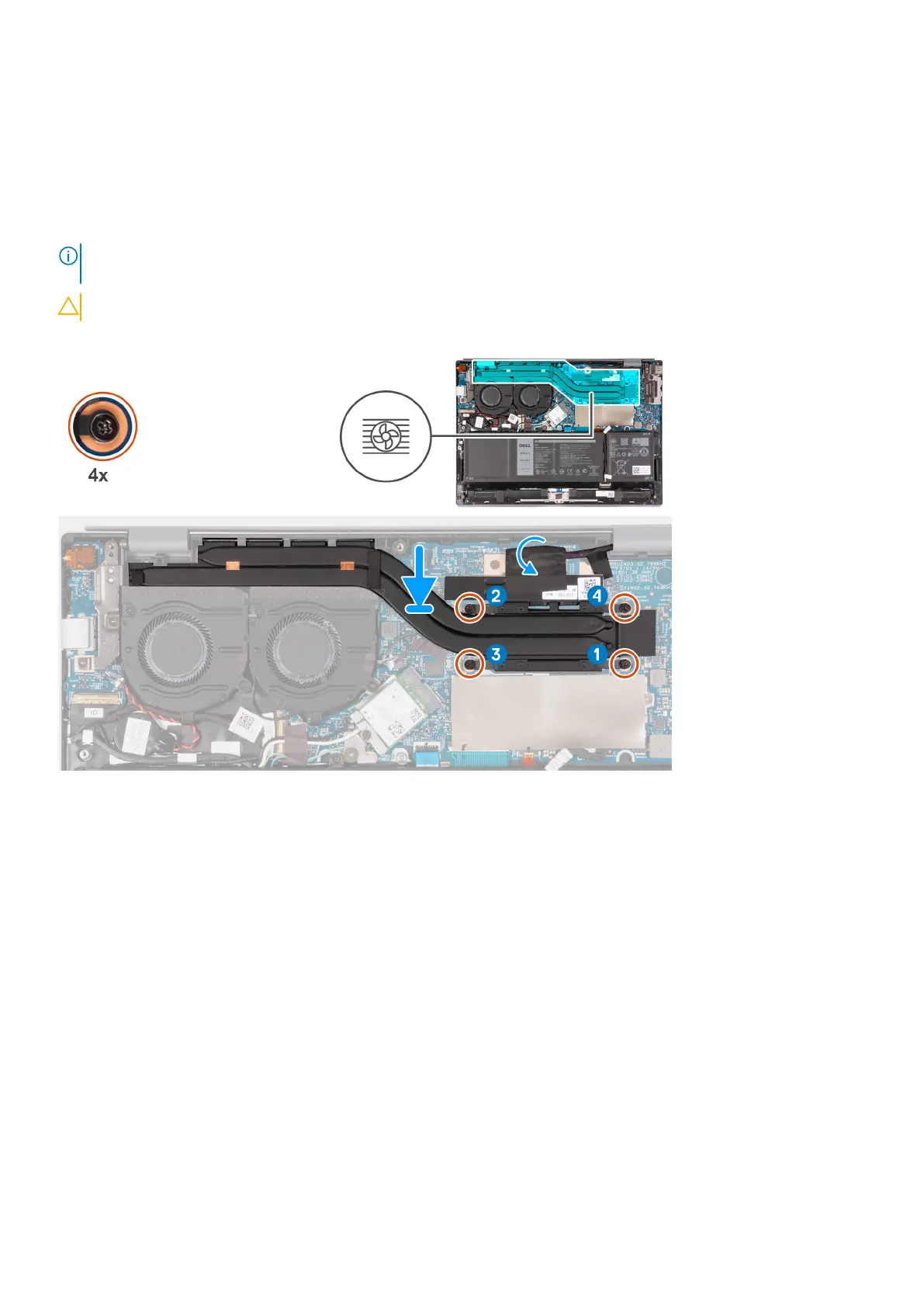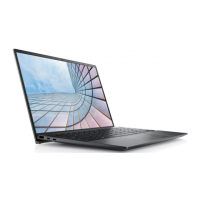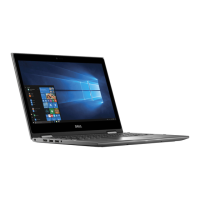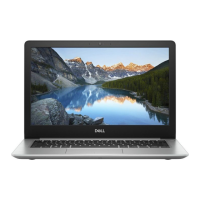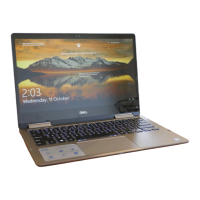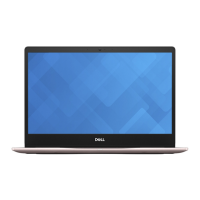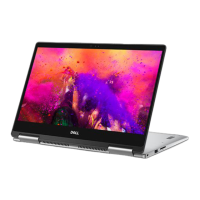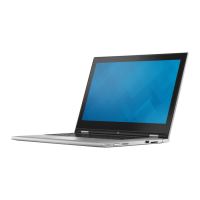Installing the heat sink
Prerequisites
If you are replacing a component, remove the existing component before performing the installation process.
About this task
NOTE: If either the system board or the fan and heat-sink assembly is replaced, use the thermal pad that is provided in the
kit to ensure that thermal conductivity is achieved.
CAUTION: Incorrect alignment of the heat sink can damage the system board and processor.
The following image(s) indicate the location of the heat sink and provides a visual representation of the installation procedure.
Steps
1. Align and place the heat sink on the system board.
2. In sequential order (1>2>3>4), tighten the four captive screws (M2x6) that secure the heat sink to the system board.
3. Adhere the tape that secures the display-cable connector latch to the system board.
Next steps
1. Install the base cover.
2. Follow the procedure in After working inside your computer.
Power button
Removing the power button
Prerequisites
1. Follow the procedure in Before working inside your computer.
2. Remove the base cover.
3. Remove the left fan.
Removing and installing components
43
